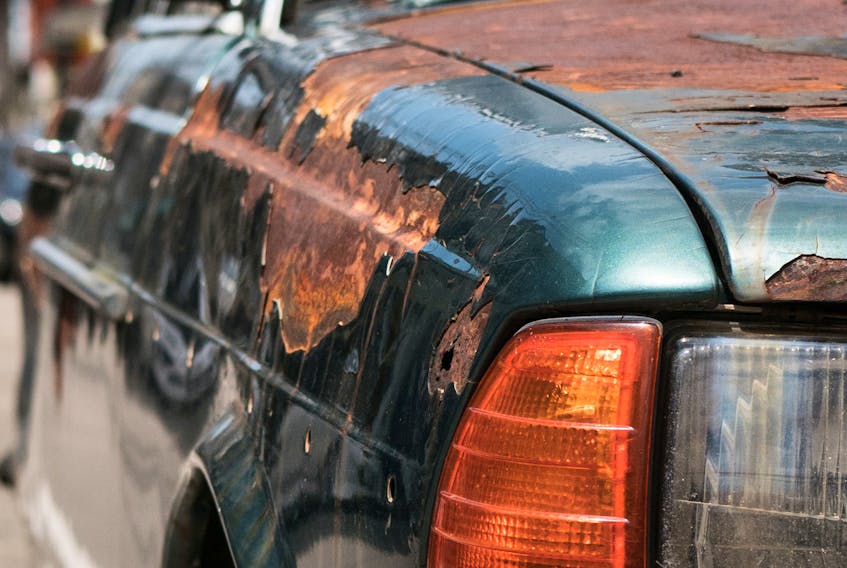Q:
About four weeks ago we purchased a 2019 Mazda CX 5, GX FWD. What a great car to drive. Absolutely love the lane departure warning system. What a great piece of engineering.
With winter a few months away, I was wondering what your thoughts are on car rust proofing? Is one brand/or type better than the others? The one aspect of rust proofing I am uneasy about is the drilling in door sills and jams to apply the product. I feel drilling into those places on a new vehicle might compromise the vehicle’s structure and might even void the manufacturer’s rust perforation warranty. Any thoughts or opinions you have on this subject would be greatly appreciated.
Trevor
A:
Rust proofing is different from undercoating. Undercoating will reduce road noise but after a few years tends to crack and hold moisture and dirt against the steel, so rusting increases. Some spray the bottom of the vehicle with heavy oil once a year to prevent rusting. It is effective but very messy.
The best rust preventative (nothing is rust proof) methods will place a barrier coating between the metal and water with road salt in the nooks and crannies of the under body. The waxy type coatings seem to do this best but they must be sprayed into interior cavities to work the best. This involves drilling holes in concealed body areas that are then covered with plastic plugs.
Rocker panels, inner wheel structures and under body floor braces are the places that are hardest to protect but need it most because they can hold dust and moisture that causes rust. No structural parts are damaged using this method, but I would check with the Mazda dealer to ensure it doesn’t void the factory warranty.
Modern vehicles use galvanized metal in critical areas to reduce rust and dip the body in rust preventing paint undercoat tanks to cover body panels. Keeping the underside of your new car clean and washed frequently in winter will help prolong its body life.
Q:
I am building a custom 1968 Nova hot rod and have installed an engine and transmission from a 2006 Chev truck into the car. I have it wired and running using the truck wiring harness and am using the truck computer but I want to upgrade the wiring and remove unnecessary items. I understand that reprogramming the computer may be required to get rid of some of this. I have read about reprogramming programs that are available to buy. Do you know how they work and what they can do?
A:
The programming installed in the truck computer at the factory must first run the engine to meet emission standards. Then it must provide smooth power for all driving conditions and types of drivers, from the person that idles around town to the driver towing heavy loads. It is possible to reprogram the computer using after-market programs to provide increased performance and eliminate some of the factory equipment but it does take a good knowledge of vehicle systems and operation.
You could buy an after-market program that will allow you to change the vehicle programming but the changes you make could cause engine or transmission failure. I would recommend that you discuss exactly what you want to do with the program developer and see if they have a program already designed for your application — many will as this is a popular swap.
If you wish to learn to do it yourself, the software will allow you to capture and save the original program so you can quickly go back to the original starting point. Then you can go in and turn off features such as rpm limits, speed limits or EGR codes. You can also change transmission shift speeds and when the torque converter locks up. The most dangerous changes for a novice are to the spark and fuel tables. You can modify ignition timing for different driving conditions and loads. You can also change the fuel delivery for different temperatures and load conditions. Do it right and performance improves. Do it wrong and the engine can quickly be destroyed.
I would suggest starting with a custom after-market program designed for your vehicle. If you want to make changes, spend many hours watching all the engine data under all driving conditions before making small changes, one at a time.
MORE AUTO ADVICE:









